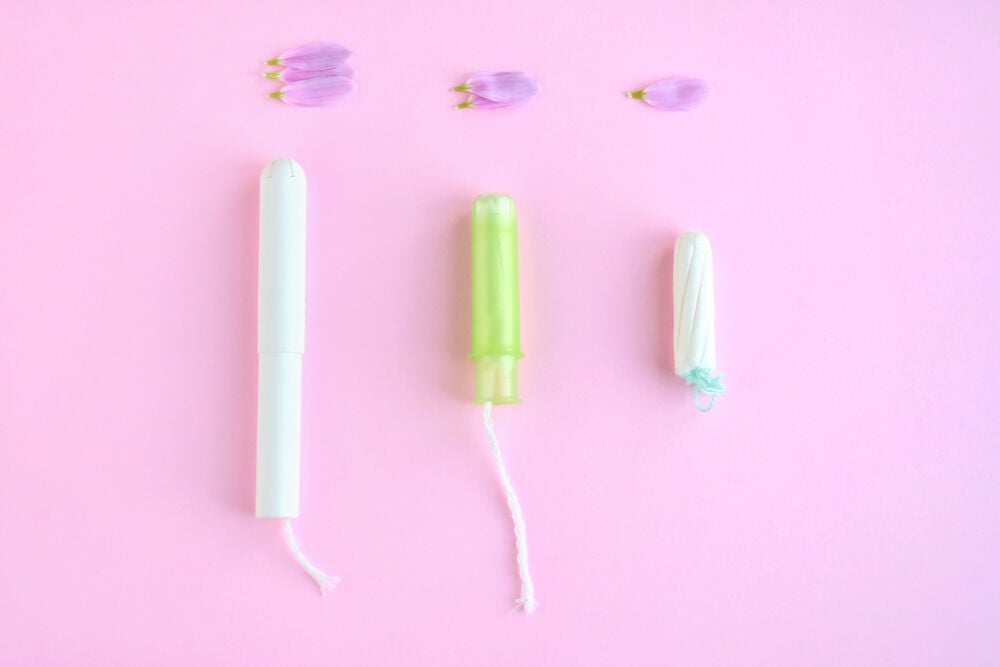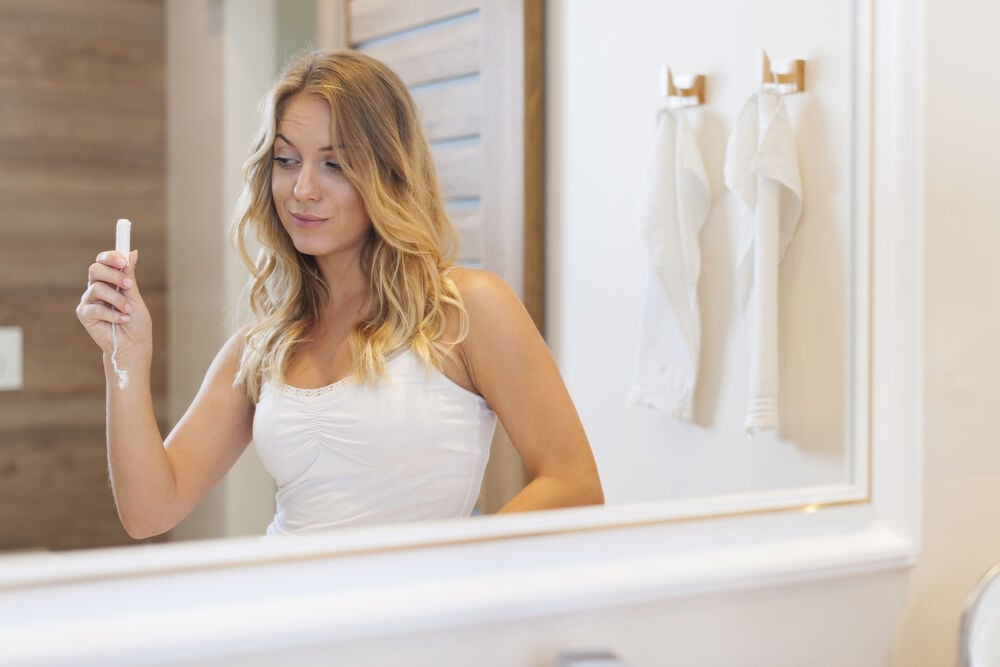Choosing between tampon sizes can sometimes feel confusing, especially to adolescents when they begin to experience a monthly menstrual cycle for the first time.
-
Tracking cycle
-
Getting pregnant
-
Pregnancy
-
Help Center
-
Flo for Partners
-
Anonymous Mode
-
Flo app reviews
-
Flo Premium New
-
Secret Chats New
-
Symptom Checker New
-
Your cycle
-
Health 360°
-
Getting pregnant
-
Pregnancy
-
Being a mom
-
LGBTQ+
-
Quizzes
-
Ovulation calculator
-
hCG calculator
-
Pregnancy test calculator
-
Menstrual cycle calculator
-
Period calculator
-
Implantation calculator
-
Pregnancy weeks to months calculator
-
Pregnancy due date calculator
-
IVF and FET due date calculator
-
Due date calculator by ultrasound
-
Medical Affairs
-
Science & Research
-
Pass It On Project New
-
Privacy Portal
-
Press Center
-
Flo Accuracy
-
Careers
-
Contact Us
Tampon Sizes: Which One to Pick?


Every piece of content at Flo Health adheres to the highest editorial standards for language, style, and medical accuracy. To learn what we do to deliver the best health and lifestyle insights to you, check out our content review principles.
Tampons come in sizes ranging from ones appropriate for first-time tampon use to heavy-flow tampons for those who experience a heavier flow of menstrual blood during their period.
Tampons should be chosen based on how much menstrual fluid is passed during a short time, rather than choosing larger capacity tampons and leaving them in longer. Tampons need to be changed regularly to avoid infection.
Benefits of using tampons
Tampons have many benefits compared to other methods of catching menstrual flow. They’re more discreet than pads and cups and can be more hygienic to change as well, with most of the expelled blood soaking into the tampon. Tampons can be left in while urinating and only need to be handled when inserting and removing.
Using an applicator with a tampon is beneficial and hygienic as it prevents exposure to menstrual fluids. You can also use toilet paper to remove tampons, preventing your hands from coming into contact with any expelled blood.
Tampons are smaller than most other menstrual products, which makes storing them very convenient. Tampons also help avoid the feeling of menstrual fluids that have not yet been absorbed by a pad.
Using tampons can also make it easier to participate in activities like swimming that would not be possible wearing a pad. Most people cannot feel a tampon once it’s been inserted, which is another benefit that tampons provide.
Wearing a tampon can also make it easier to keep fresh during your period, compared to using pads, which are more likely to provoke odors. Tampon options include ones made from organic or environmentally friendly materials. While experimenting with using tampons, consider multiple options to find the best one for you and your flow.
Take a quiz
Find out what you can do with our Health Assistant
Different size tampons
Tampons are not a one-size-fits-all product. Several tampon sizes are available. People who are new to using tampons can start with the smallest tampons for beginners. If that size tampon is not able to capture 100 percent of the menstrual flow, larger tampon sizes may be a better fit.
To avoid infection or toxic shock syndrome, choose the smallest possible tampon that absorbs the flow for about four to eight hours.

Tampon sizes indicate the amount of menstrual flow they can absorb. Common tampon sizes include:
- Junior or slim
- Regular
- Super
- Super plus
- Ultra
A larger capacity tampon is a good option if the current size must be changed within a couple of hours. Tampon insertion should never hurt. If it does, it might indicate that the size of the tampon is too large.
Some people choose to wear several different tampon sizes over the course of their period. At the beginning and end of their period, there may be a lighter flow that’s easy to manage with smaller tampons.
During the middle days of a period, larger capacity tampons might be necessary to match a heavier flow. Some people experience differences in their menstrual flow every month, making it a good idea to keep several sizes on hand for the most comfort and leak protection.
Best tampons for first-timers
Using a tampon for the first time can feel uncomfortable, and some teens may have questions about breaking their hymen. A tampon shouldn’t affect the hymen, although some discomfort is possible when you’re just beginning to use tampons.
Many tampon manufacturers provide slim or junior tampons. These are the smallest tampon sizes available and are suitable for first-timers to experiment with as their body adjusts to using them.
When selecting tampons for the first time, choose those with a small insertion applicator. Plastic applicators may be more comfortable for less-experienced users than cardboard ones. There are also tampons that don’t have an applicator. These types of tampons can be placed and positioned using only the fingers to achieve a comfortable insertion.
First-time tampon users can also use slim pads or panty liners to capture leakage. This backup allows you to get used to your unique menstrual flow and choose the right-sized tampon best suited to your needs. Active people may also want to consider sport tampons, which are designed to flex naturally during exercise. This flexibility ensures the tampon fits well within the vagina and shifts during movement to prevent leaks.
Less-experienced tampon users should take care to insert tampons only as deep as the applicator allows to prevent the tampon from becoming stuck when inserted too far. The string from a tampon should hang freely, making it easier to remove the tampon when it’s time to change.

Heavy-flow tampons
Some people experience a heavy flow during their period. A tampon with too low an absorbency may need to be changed frequently and could cause leakage and staining.
For the sake of safety, the largest tampons should only be used sparingly when the flow is heaviest. Tampon multi-packs include several tampon sizes to manage varied flow levels throughout a period.
Some breakthrough leakage is possible if tampons are left in too long. However, if the largest tampon is unable to contain menstrual flow for more than a few hours, consult a trusted health care provider to ensure a medical issue isn’t causing an extremely heavy flow of blood.
Choosing the right tampon size requires some experimentation. Once you’ve chosen the right level of absorbency, type of applicator, and materials, you can work on the insertion and removal techniques that are most comfortable.
Once you’ve determined the best tampon size to avoid leakage or pain, you can then become accustomed to the feel of the tampon, when it’s ready to be changed, and when a different size might be necessary.


Hey, I'm Anique
I started using Flo app to track my period and ovulation because we wanted to have a baby.


The Flo app helped me learn about my body and spot ovulation signs during our conception journey.


I vividly
remember the day
that we switched
Flo into
Pregnancy Mode — it was
such a special
moment.
Real stories, real results
Learn how the Flo app became an amazing cheerleader for us on our conception journey.




